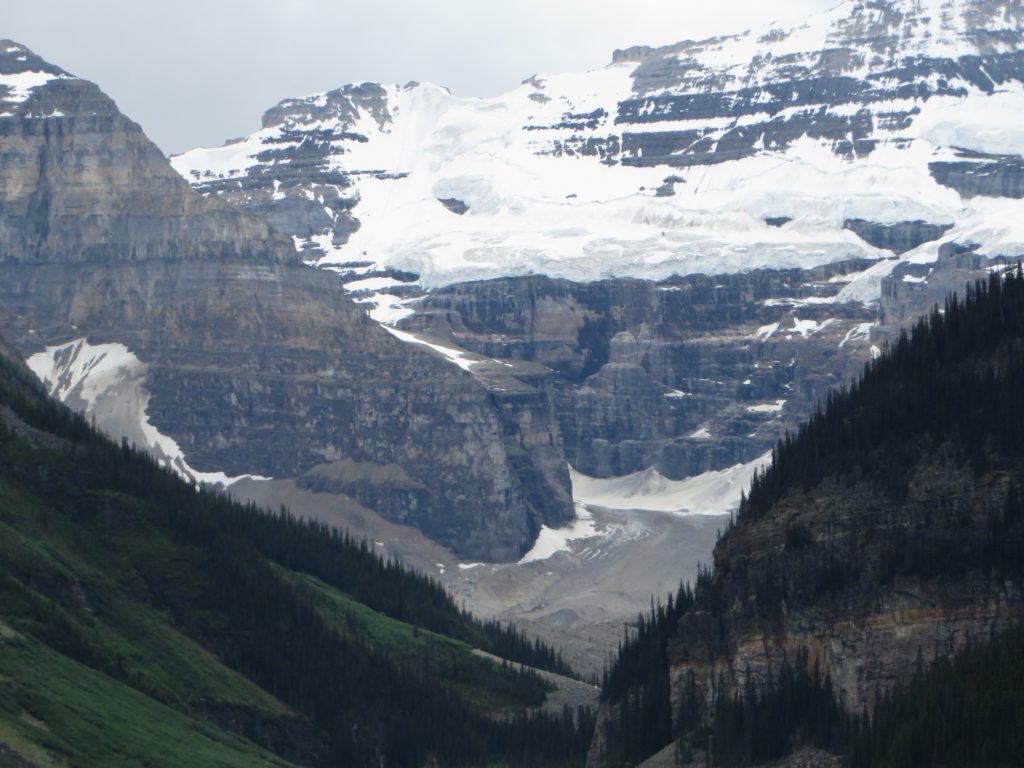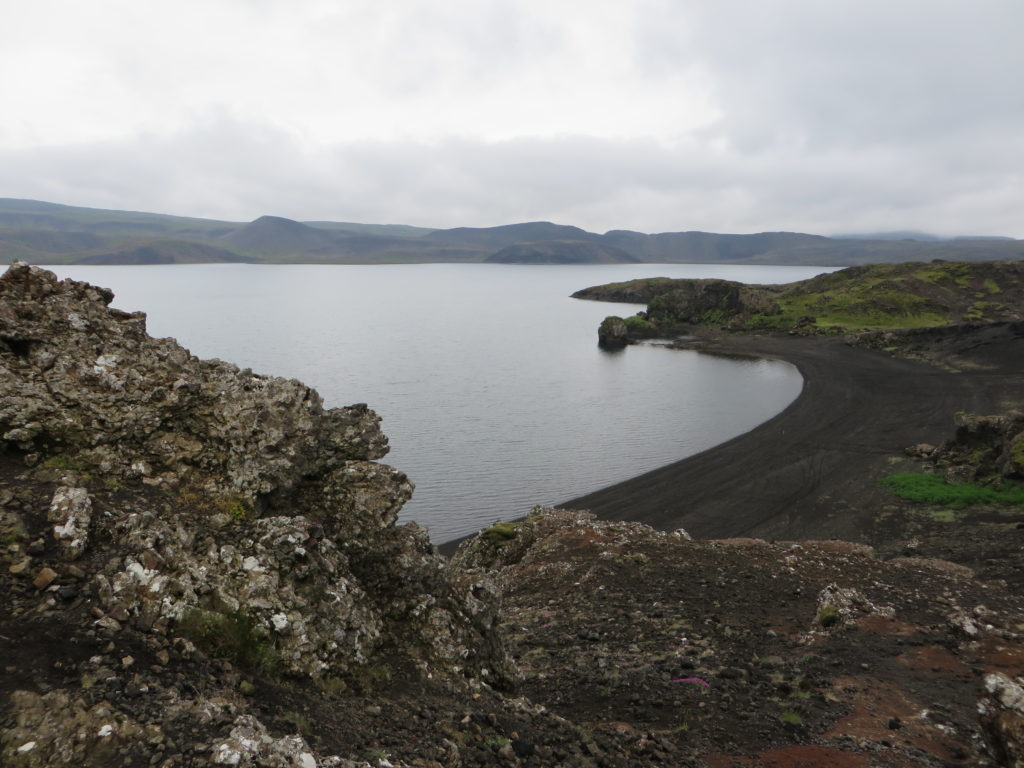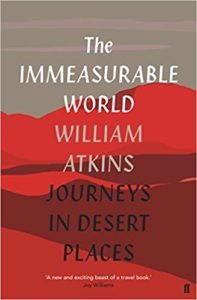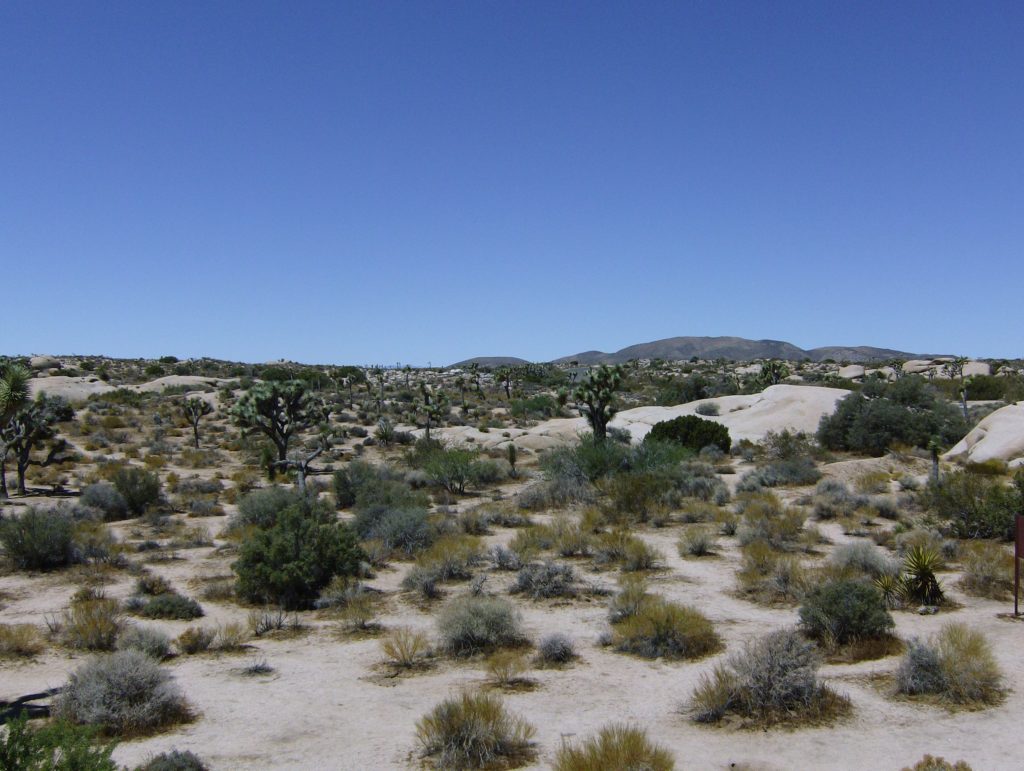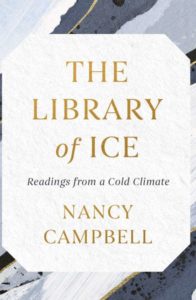 The Library of Ice: Readings from a Cold Climate – Nancy Campbell (Scribner UK, 2018)
The Library of Ice: Readings from a Cold Climate – Nancy Campbell (Scribner UK, 2018)
Nancy Campbell is a poet and a printmaker. She ascribes her fascination with the world’s icy places to the snow globe she had as a child: within in its curved walls, glimpsed through a storm of snowflakes, there existed a whole other world.
To conduct the research that went into The Library of Ice Campbell spent time at writers’ retreats in Iceland, Greenland, Canada and Switzerland. She also read extensively of the works of other writers on the subject matter of ice. But not just writers, Campbell also considers the responses of musicians, artists, film-makers and even curling enthusiasts.
Most of us do not live in the icy regions of the world; but Campbell argues that ice is integral to the lives of all of us. She writes about the bore-holes she visits in the Antarctic and the drilled cores that are revealed by the operation, each successive layer showing part of the history of our planet. Our past is recorded in the ice but, unless we act decisively on global climate change, the ice will also bring an end to our current way of life.
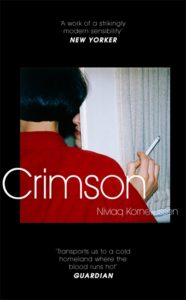 Crimson – Niviaq Korneliussen, translated by Anna Halager (Virago, 2018)
Crimson – Niviaq Korneliussen, translated by Anna Halager (Virago, 2018)
Until I read this, Niviaq Korneliussen’s second novel, I wasn’t aware that there was a Greenlandic literary scene. With a population of just 56,000 Greenland has produced few home-grown writers. But through Crimson, and 2014’s Homo Sapienne, Korneliussen has gained a large readership in Denmark, Greenland’s former colonial power, and with further translations she is beginning to find an audience in the wider world.
Crimson tells the story of four young gay characters living in Nuuk, Greenland’s capital. Their experiences are universal: they party, they study, and they work. They make relationships and then experience the pain of breaking up. But the particular joys of this book are the verve and urgency of Korneliussen’s writing and her fascinating descriptions of Nuuk’s nascent queer scene.
At its heart this is a book about clinging on: Korneliussen’s characters are engaged in a struggle to make a life, to establish an identity. At a wider level the people of Nuuk, and Greenland’s other small, isolated communities cling on too. They are balanced between their ancient island home, in all its icy austerity, and the new, but equally challenging demands of the modern world.
The Immeasurable World: Journeys in Desert Places – William Atkins (Faber, 2018)
William Atkins’ previous book, The Moor, the story of a quintessentially English landscape, was reviewed here in 2014. This present work looks beyond these shores and explores, both physically and spiritually, the world’s desert regions. The Oxford English dictionary defines a desert as a ‘waterless, desolate area of land with little or no vegetation, typically one covered with sand.’ Atkins’ travels through deserts in five of the world’s continents identifies ample evidence of there being far more to these regions than a simple lack of water.
He discovers deserts as places of spiritual retreat in Egypt, regions of banishment in China and, in Australia, Kazakhstan and the United States, areas for testing the nightmare weapons of the twentieth century. He also ruminates on the role of deserts as ‘permissive spaces’ where, for example, the Mormons were able to find a home in the nineteenth century and, at the Burning Man Festival, people interested in alternative lifestyles are able to engage in ‘spontaneous self-expression’.
Atkins’ idea for this book grew, apparently, when he was staying at a monastery on Dartmoor and fell into reading about the Christian ascetics of the deserts of the Middle East. In time he came to study the world’s deserts more extensively and he writes about coming to see them as one continuous place and all the books about them as one all-consuming account.
T.E. Lawrence in Arabia and D.H. Lawrence in New Mexico both found deserts to be places of asylum away from their difficulties in England. The reverse side of this particular coin is a syndrome known as accidie, a kind of desert-induced depression. Atkins experienced this condition when he returned from Oman. Thankfully for us he was able to channel his emotional trials into this fascinating work.

